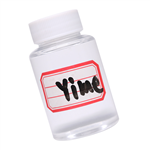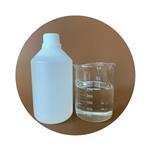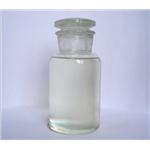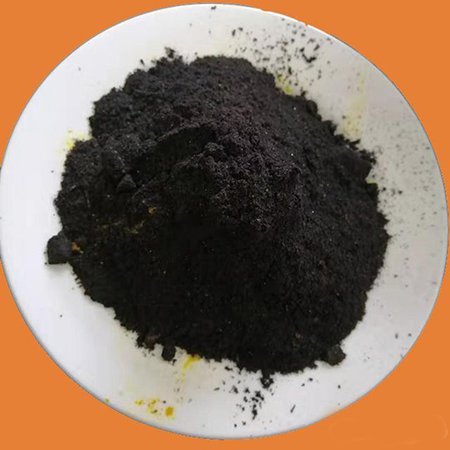The performance and synthesis method of ethylhexylglycerin
Jan 13,2022
Background
Ethylhexylglycerin is a relatively new cosmetic ingredient that is used for its surfactant, emollient, skin-conditioning and antimicrobial properties. Since 2002, it has been occasionally reported as a contact allergen. Ethylhexylglycerin is a synthetic compound derived from grains and plants, and it is a relatively new chemical on the market [1].
Ethylhexylglycerin is a glyceryl ether and serves as an emollient solvent and a fixative with antimicrobial properties, and it is reported to enhance uptake of preservatives in microorganisms. It is often used as an alternative to parabens. The International Nomenclature of Cosmetic Ingredients name is Ethylhexylglycerin, and the chemical formula and synonym names are shown in Figure 1. Ethylhexylglycerin is a colorless to pale viscous liquid. It is reported to be used at a concentration up to 2% in leave-on products and 8% in rinse-off products. It is manufactured and marketed by Schu¨lke & Mayr GMBH, Norderstedt, Germany, under the trade name, Sensiva SC50, which is greater than 99% pure. Ethylhexylglycerin is found in many cosmetic products, that is, antiaging creams, sunscreens, eye shadows, eye creams, lip gloss, deodorants, facial moisturizers, and various types of cleansers.
Allergic contact dermatitis from ethylhexylglycerin
The Cosmetic Ingredient Review panel has published 4 predictive dermatotoxicologic reports describing tests with cosmetic products containing Ethylhexylglycerin in the concentration range from 0.4% to 0.995%. Three repeated insult patch tests including 103 to 111 volunteers and 1 modified Draize test performed in 600 volunteers concluded that the tested products under the conditions of study did not cause irritation or sensitization.1 Four case reports on Ethylhexylglycerin-induced allergic contact dermatitis are published.2Y5 They were all diagnosed by targeted testing with Ethylhexylglycerin 5% to 10% in petrolatum in 4 women with cosmetic facial dermatitis. They had positive patch tests to suspected culprit cosmetic products, and subsequent testing with product ingredients confirmed the allergic reaction to be caused by Ethylhexylglycerin. The testing was carried out with product ingredients supplied by the product manufacturers and/ or Sensiva SC50 obtained from Schu¨lke & Mayr. In 2 cases, strong vesicular patch test reactions appeared [2].
At the Department of Dermatology, Odense University Hospital and Allergy Centre, Ethylhexylglycerin 5% in petrolatum, based on Sensiva SC50, has been included in the baseline series for more than a year. Of 785 consecutively patch-tested dermatitis patients, 1 (0.13%) had a strong positive (++) reaction at day 3 and + reaction at day 7. It was a 35-year-old woman with persistent atopic dermatitis now characterized by head and neck dermatitis requiring repeated short-term treatments with prednisolone. She also had mucosal atopy and positive skin prick tests to animal dander and dust mites. During the patch test procedure in a quiet phase, she experienced a flare up of facial dermatitis. Subsequent interview disclosed that she had used a face cream containing Ethylhexylglycerin. The patient had discarded the product some time ago, so it was not patch tested.
Among the 785 tested patients, we saw no irritant reactions and only 6 doubtful reactions without known clinical relevance. Of the 6 patients, 1 had a positive nickel patch test, and the 5 were negative at testing with the baseline series. As figture 1 showed, allergic contact dermatitis from ethylhexylglycerin [5].

Fig. 1. Erythematous scaly plaques under the right arm (a). Scaly biopsy from the lesional area shows infiltration of lymphocytes with epidermotropism and irregular nuclei (b,c), and a prevalence of CD8+ T-cells (d) [3].
Synthetic method of high-purity octoxyglycerol
The synthesis method of octoxyglycerol relates to the field of synthesis of daily chemical additives [4-5]. The synthetic method for preparing high-purity octoxyglycerol mainly includes the following steps: first add 2-ethylhexyl glycidyl ether and catalyst to acetic anhydride, react for 1-2 hours to obtain an intermediate, and then adjust the system The pH value is 12-14, stirring for 1 hour, standing for liquid separation, and finally washing the oil phase with ammonium chloride solution and water, and rectifying the oil phase to obtain octoxyglycerol.
Industrial production of octoxyglycerin plays an important role in the field of new cosmetics. The steps of industrial production of octoxyglycerin mainly include: 1 Mixing isooctanol and alkali, adding phase transfer catalyst, and adding epichlorohydrin dropwise under cooling conditions. After washing with water and layering, an intermediate is obtained. 2 Mix the intermediate and the ring opener, and react under heating. After washing with water and layering, a crude product is obtained. 3 Separate the crude product through a rectification column to obtain a qualified product, octoxyglycerol. The method has the characteristics of short synthesis circuit, low cost, high yield and high quality.
Results
All but one of the Ethylhexylglycerin-allergic patients were female, with a median age of 43 years (range: 29–81 years), most often suffering from dermatitis on the face, and sometimes on the hands and/or axillae. As the culprit products, leave-on cosmetics were identified, including a high number of proclaimed ‘hypo-allergenic’ and ‘preservative-free’ facial creams, sun protection creams, and deodorants.
Conclusions
Ethylhexylglycerin is a rare, but highly relevant, cosmetic sensitizer, even in those products advertised to be safe for consumers. Targeted patch testing with Ethylhexylglycerin 5% pet. is very useful, and routine patch testing in a cosmetic series may be considered. Higher test concentrations might be indicated in selected cases.
Reference
1 Olivier Aerts,Lien Verhulst,An Goossens,Ethylhexylglycerin: a low-risk, but highly relevant, sensitizer in ‘hypo-allergenic’ cosmetics[J],Contact Dermatitis 2016, 74(5): 281-288
2 Andersen, Klaus E. (2012). Ethylhexylglycerin—a Contact Allergen in Cosmetic Products. Dermatitis, 23(6): 291
3 Linsen G, Goossens A. Allergic contact dermatitis from ethylhexylglycerin[J]. Contact Dermatitis, 2002, 47(3): 169-000.
4 A synthesis method of ethylhexylglycerin, Ding Shengfeng, 20170724, CN201710605563.7) Method for industrial production of ethylhexylglycerin
5 Xin Hua, Zhong Quanfa, Shi Lihui. CN104402682A, 20150311 The synthesis process of a new type of cosmetic antibacterial agent ethylhexylglycerin
- Related articles
- Related Qustion
- Ethylhexylglycerin: A Reliable Ingredient Enhancing Cosmetic Products Dec 28, 2023
Ethylhexylglycerin is a versatile, safe, and widely used ingredient in various cosmetic products, serving as a surfactant, preservative, skin conditioner, moisturizer, scalp cleanser, and stabilizer.
- Learn More About Ethylhexylglycerin Nov 24, 2022
The passage introduces Ethylhexylglycerin in skin care and preservative.
Bacillus thuringiensis (Bt) is a soil bacterium that forms spores during the stationary phase of its growth cycle.....
Jan 13,2022APIFerric trichloride is an important chemical raw material, because it has trivalent iron ions, so ferric trichloride has good oxidizing properties, which makes ferric trichloride have many applications....
Jan 13,2022APIEthylhexylglycerin
70445-33-9You may like
Ethylhexylglycerin manufacturers
- Ethylhexylglycerin
-

- $25.00 / 1KG
- 2024-04-22
- CAS:70445-33-9
- Min. Order: 50KG
- Purity: 99
- Supply Ability: 1000kg
- Ethylhexylglycerin
-

- $6.00 / 1KG
- 2024-04-20
- CAS:70445-33-9
- Min. Order: 1KG
- Purity: More than 99%
- Supply Ability: 2000KG/MONTH
- Ethylhexylglycerin
-

- $0.00 / 25kg
- 2024-04-12
- CAS:70445-33-9
- Min. Order: 1kg
- Purity: 99%
- Supply Ability: 2000ton





